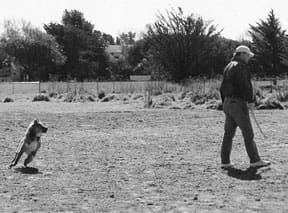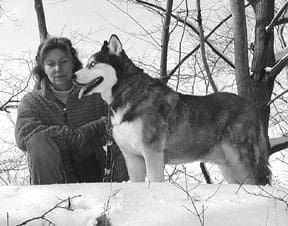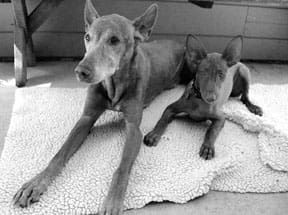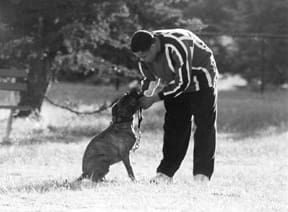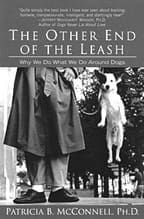The making of laws and sausage, goes the old saying, is better unseen. Apparently, the pet food industry feels the same way about “wet” food for dogs and cats. We haven’t yet managed to get into a cannery to see how the product is made (but we’re not giving up!). There are a few reasons for this.
The first has to do with the fact that there are very few wet food canneries in the U.S., relative to facilities that manufacture dry food. (As a matter of fact, the entire canning industry – of pet food and human food – has seen enormous consolidation in the last decade.
Many facilities have been acquired by foreign firms and then shuttered, with their operations being offshored.) The pet food industry giants – Purina, Hills, and the like – maintain their own private manufacturing facilities. (Representatives of both companies have told us that tours of their facilities are out of the question, although we know any number of veterinarians who were able to tour the plants when they were in vet school.) The vast majority of the companies that make the types of food we like, however, use independent, “contract” manufacturers, and there are only about half a dozen of these in the U.S. left. The result is, there is a relatively small pool of wet pet food makers we can ask for a tour.
The largest of these, Menu Foods, is the leading North American contract manufacturer of wet pet food products sold by supermarket retailers, mass merchandisers, pet specialty retailers and other retail and wholesale outlets; they make a great many of the foods on our “Top Approved Wet Dog Foods” list. By all accounts, they do a good job; they are trusted by many of the pet food companies we trust. But in many cases, not even the executives of these companies can get a tour of a Menu Foods canned food plant. And if they do get a tour, it’s on a night when the equipment is not operating.
We were told by a Menu Foods representative that the reason for this secrecy has to do with maintaining the confidentiality of Menu’s clients. If they allowed a tour of the plant, a rep of one pet food company could conceivably sleuth information about the proprietary formula for a competitor’s product or ingredients. Simply seeing a competitor’s labels on a pallet can confirm the competitor’s contract with Menu – something that is supposedly confidential.
We find this incredibly annoying, since in our experience, all the pet food executives already know exactly where their competitors’ products are made.
We haven’t yet asked the smaller contract manufacturers who make top-quality foods – Merrick Pet Foods in Texas, for example, or Evanger’s Dog & Cat Food Company in Illinois – for a tour of their facilities. They’ve been very forthcoming in the past, however, and the next time we’re in Texas or Illinois, we suspect, we’ll be able to fulfill our wish and see wet pet food get made.
Types of wet food
There are several types of wet dog food, and, as you may have gathered by our frequent use of the phrase “wet dog food,” increasingly, wet food is not canned but contained in pouches or trays.
The latter containers, especially in tiny serving sizes, are most popular with cat owners, since cats tend to be fussier about the freshness of their food. Plus, until recently, the only dog foods that are available in pouches and trays tend to be what we consider to be very low-quality products. The pouched products made by Kansas City’s Three Dog Bakery are a welcome and astonishing exception; the ingredients are of extraordinary quality.
No matter what package is used, all wet pet foods are heat-sterilized after the container is sealed. This process “cooks” the food, kills any pathogens, coagulates the proteins, and gelatinizes the starches, increasing their digestibility.
Pet food manufacturers divide wet food products into categories based on the food’s final form.
The most expensive to produce are the products described as “meat in jelly” or “meat in gravy.” These are comprised of chunks of “real” animal material in a sauce that has been thickened with either a gelling product (such as locust bean gum and carrageenan) or xanthan or similar gums; products whose matrix more closely resembles a gravy are generally thickened with guar gum or modified starches.
The not-very-yummy-sounding “meat analog” products are very similar to the products described above, with the difference being that the “meat” has been finely ground and restructured into chunks of the desired shape and size.
These chunks can be made out of animal products alone, or made with a combination of meat and cereal. Generally some sort of binder is required to help the manufactured chunks hold together – soy isolates or glutens are frequently used in this capacity; however, in some products, blood plasma and/or wheat flour are included to help bind the chunks, helping them retain a discrete shape. We were recently surprised to see a company whose products we used to like using blood plasma as a binder. Yuck!
“Loaf” products, which generally contain significant amounts of grain (for a wet product) are the least expensive to produce, grain being less expensive than animal products. Sometimes the loaf contains chunks of meat.
Recent innovations
Two very uncommon types of wet food appear on WDJ’s “Top Approved Wet Dog Food” list. One is Spot’s Stew, made by Halo, Purely for Pets. As the name suggests, this product most closely resembles a “chunk in gravy” product but it’s much more liquid, and there are a lot of vegetable chunks in it, too; it really is a stew.
The other unusual food type contains large chunks of poultry or fish, including their bones. These products were introduced to the market by Active Life Pet Products and have been more successfully copied in some formulas by Merrick and Evanger’s. Dog owners who are unaccustomed to the practice of feeding fresh, raw, meaty bones to dogs often panic when they detect the chicken leg bones in some of these formulas. However, the canning process softens the bones to a readily digestible texture that you can easily smush between your fingers.
The inclusion of vegetables, herbs, and even fruit has gained popularity, no doubt because the more of these ingredients there are listed on the label, the more it may appeal to the person who buys it for their dog. Undoubtedly the incorporation of these ingredients has presented pet food makers with manufacturing challenges; not only do they want the batter to be uniformly mixed, they have to worry about delivering at least some recognizable vegetable matter, too!
WDJ’s selection criteria
Here’s how we determine whether a wet food is truly “premium.”
• We eliminate all foods containing artificial colors, flavors, or added preservatives. Canned food should be high in animal proteins, and as such, plenty palatable without any added flavors. It also needn’t contain any preservatives, given its sterilized and sealed containment.
• We reject foods containing fat or protein not identified by species. “Animal fat” and “meat proteins” are euphemisms for low-quality, low-priced mixed ingredients of uncertain origin.
• We reject any food containing meat by-products or poultry by-products. There is a wide variation in the quality of the by-products that are available to dog food producers. And there is no way for the average dog owner (or anyone else) to find out, beyond a shadow of a doubt, whether the by-products used are carefully handled, chilled, and used fresh within a day or two of slaughter (as some companies have told us), or the cheapest, lowest-quality material found on the market.
There is some, but much less variation in the quality of whole-meat products; they are too expensive to be handled carelessly.
• We eliminate any food containing sugar or other sweetener. Again, a food containing quality meats shouldn’t need additional palatants to entice dogs.
• We look for foods with whole meat, fish, or poultry as the first ingredient (and perhaps the second and third ingredients, too!) on the label. (Just as with food for humans, ingredients are listed on the label by the total weight they contribute to the product.)
• We like it when a nutritious meat, poultry, or fish broth is used in place of the water that may be necessary for processing. Broth is obtained by cooking meat, fish, or poultry bones, parts, and/or muscle tissue.
• If grains or vegetables are used, we look for the use of whole grains and vegetables, rather than a series of reconstituted parts, i.e., “rice,” rather than “rice flour, rice bran, brewer’s rice,” etc.
• Speaking of grain . . . We’ve discussed this many times, but there is nothing that says a canned food has to contain any grain or carbohydrate source.
Grains originally found their way into pet food because they were less expensive than animal proteins; of course, their amino acid profiles are much less complete than those offered by animal-sourced proteins, so we’re not crazy about the use of any grain or grain fragment as a protein source.
And, unlike humans, dogs do not need carbohydrates to live; they can do fine with a diet that contains no carbs whatsoever. We strongly prefer dog foods that contain small amounts of grain or no grain at all.
Go forth and compare
In the chart at the end of this article, we’ve listed a number of canned dog foods that meet our selection criteria. It’s vitally important that you understand the following points regarding these foods:
• The foods on our list are not the only good foods on the market.
• Any food that you find that meets our selection criteria, outlined above, is just as good as any of the foods on our list.
• We have presented the foods on our list alphabetically. We do not “rank order” foods. We don’t attempt to identify which ones are “best,” because what’s “best” for every dog is different.
• The proof is in the pudding. If your dog does not thrive on the food, with a glossy coat, itch-free skin, bright eyes, clear ears, and a happy, alert demeanor, it doesn’t matter whether we like it or not.
Using the selection criteria we have outlined above, and perhaps taking into account some of the “extra credit” criteria listed in the “Further Attributes of Top-Quality Dog Food” sidebar, go analyze the food you are currently feeding your dog. If it doesn’t measure up, we encourage you to choose a new food based on quality, as well as what works best for you and your dog in terms of types of ingredients, levels of protein and fat, and local availability and price.
Our list of Approved “Top Wet Dog Foods” is offered as a starting place, and for its value as a comparison to other products you may find.
Also With This Article
Click here to view “Buying the Best Canned Dog Food”
Click here to view “The Benefits of Canned Dog Food”
Click here to view “WDJ’s 2013 Canned Dog Food Review”
Click here to view “Which is the Best Type of Dog Food?”



